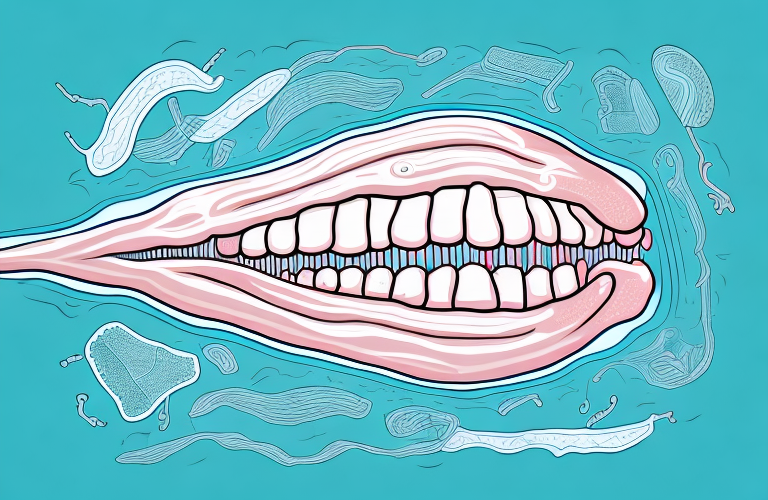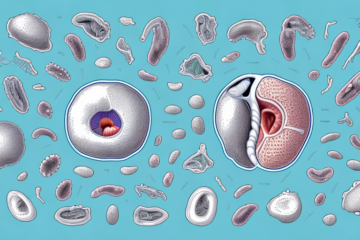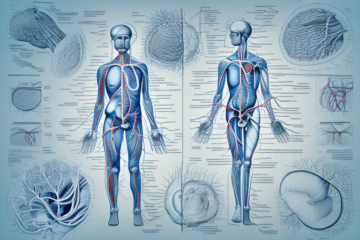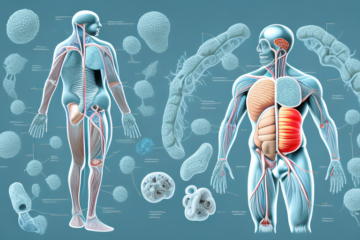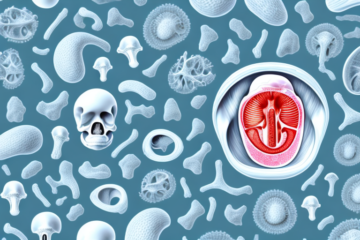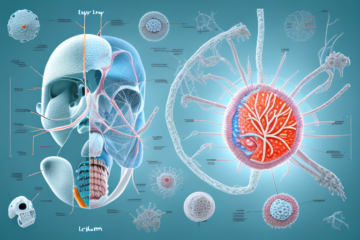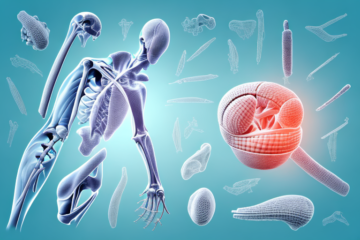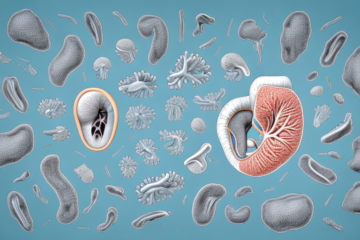The tongue is a fascinating organ with a complex structure and a variety of functions. From speech to taste perception to nonverbal communication, this small yet powerful muscle plays a crucial role in our daily lives. In this article, we will explore the anatomy of the tongue, its functions, and some common problems associated with it.
The Anatomy of the Tongue: Understanding the Structure and Parts
The tongue is a muscular organ located in the oral cavity and is composed of several muscle groups, including intrinsic and extrinsic muscles. The intrinsic muscles are responsible for the shape and movement of the tongue, while the extrinsic muscles control the positioning and posture of the tongue.
The tongue is covered in a thin, transparent membrane called the mucosa, which contains taste buds that allow us to perceive different flavors. Additionally, the tongue has papillae, small bumps on its surface that can be seen with the naked eye and contain taste buds as well.
Overall, the tongue is a complex organ with a unique structure that enables it to perform its many functions.
One of the primary functions of the tongue is to aid in the process of digestion. As food enters the mouth, the tongue helps to move it around and mix it with saliva, which contains enzymes that begin to break down the food. The tongue also helps to push the food towards the back of the mouth and into the throat, where it can be swallowed and continue on its journey through the digestive system.
In addition to its role in digestion, the tongue is also important for speech. The movements of the tongue, along with those of the lips, teeth, and other parts of the mouth, help to form the sounds that make up speech. Without the tongue, it would be difficult, if not impossible, to produce many of the sounds that we use to communicate with one another.
The Role of the Tongue in Speech: How it Shapes Our Words
The tongue is essential for speech articulation, as it helps us produce different sounds and shapes our words. The movement and positioning of the tongue work in coordination with other oral structures, such as the lips and palate, to create specific speech sounds.
For example, when we pronounce the sounds “t” and “d,” the tip of the tongue touches the alveolar ridge behind the upper front teeth. This action creates a stop in the airflow, which, when released, produces the sound.
The complexity of tongue movements during speech is astonishing, and understanding how it works can help people with speech difficulties to improve their articulation.
Moreover, the tongue also plays a crucial role in our sense of taste. The taste buds on the tongue detect different flavors, such as sweet, sour, salty, and bitter, and send signals to the brain to interpret them. The tongue’s surface is covered with tiny papillae that contain taste buds, and the movement of the tongue helps to distribute food and drink across these taste buds, enhancing our ability to taste and enjoy different flavors.
Taste Buds and the Tongue: Exploring the Science of Taste Perception
Taste perception is another crucial function of the tongue, which is enabled by the taste buds distributed throughout its surface. These taste buds respond to different chemicals present in the food or drink we consume and send signals to the brain to identify the flavor.
There are five primary tastes: sweet, salty, sour, bitter, and umami. The tongue can distinguish between these tastes and send signals to the brain, which helps us to identify and enjoy our food. Interestingly, the taste buds are not evenly distributed throughout the tongue, and their sensitivity can change depending on various factors, such as age, genetic makeup, and smoking habits.
Recent studies have shown that taste perception is not only limited to the tongue but also involves other sensory organs, such as the nose and the brain. The aroma of food can significantly affect our perception of taste, as it interacts with the olfactory receptors in the nose, which send signals to the brain. This is why we often find that food tastes bland when we have a cold or a blocked nose.
Moreover, taste perception can also be influenced by psychological factors, such as expectations, emotions, and past experiences. For example, if we expect a particular food to taste a certain way, we are more likely to perceive it that way, even if the actual taste is different. Similarly, our emotions and memories associated with a particular food can affect our perception of its taste, making it either more enjoyable or less appealing.
The Connection Between the Tongue and Smell: How They Work Together
The tongue and the sense of smell work together to create a complete sense of taste. The odor molecules in the food travel through the nasal cavity, where they stimulate the olfactory receptors, enabling us to detect different smells. When combined with the taste buds’ signals, we can experience the full flavor of food.
Additionally, the tongue’s surface is covered with mushroom-shaped papillae that contain taste buds and provide a rough surface for the food to move around in the mouth, enhancing our sense of texture and mouthfeel.
Recent studies have shown that the connection between the tongue and smell goes beyond just taste. The olfactory receptors in the nose also play a role in detecting the spiciness of food. When we eat spicy food, the capsaicin molecules bind to the pain receptors in our mouth, causing a burning sensation. However, the olfactory receptors also detect the capsaicin molecules, which can intensify the perception of spiciness.
Furthermore, the connection between the tongue and smell can also affect our memories and emotions. The olfactory receptors are closely linked to the brain’s limbic system, which is responsible for processing emotions and memories. This is why certain smells can trigger strong emotional responses or vivid memories, even more so than other senses like sight or touch.
Common Tongue Problems: Causes and Treatments
The tongue is not immune to various ailments, including infection, inflammation, and damage. Some common tongue problems include tongue thrusting, tongue-tie, canker sores, and geographic tongue. Tongue issues can be caused by various factors, such as genetics, poor oral hygiene, dental problems, and stress.
Treatment for tongue problems depends on the underlying cause and may involve medication, lifestyle changes, or therapy. Good oral hygiene practices, such as regular brushing and flossing, can help reduce the risk of tongue problems and maintain a healthy tongue.
In addition to the aforementioned causes, certain medical conditions can also lead to tongue problems. For example, people with diabetes may experience a condition called “burning mouth syndrome,” which can cause a burning sensation on the tongue. Additionally, some autoimmune disorders, such as lupus and Sjogren’s syndrome, can cause inflammation and ulcers on the tongue. It is important to consult with a healthcare professional if you experience persistent tongue problems, especially if they are accompanied by other symptoms.
The Importance of Oral Hygiene for a Healthy Tongue
Maintaining proper oral hygiene is essential for the health of the tongue and the overall well-being of the body. Poor oral hygiene practices can lead to various tongue problems, gum disease, and other health issues.
To keep your tongue healthy, it’s essential to brush your teeth twice a day, floss daily, use mouthwash, and maintain a balanced diet. Regular dental checkups are also essential to detect any problems early and prevent them from worsening.
In addition to the above practices, there are other ways to maintain a healthy tongue. One of them is tongue scraping, which involves using a tongue scraper to remove bacteria and debris from the surface of the tongue. This can help prevent bad breath and improve overall oral health.
Another important factor in maintaining a healthy tongue is staying hydrated. Drinking plenty of water throughout the day can help flush out harmful bacteria and keep the mouth moist, which can prevent dry mouth and other oral health problems.
The Relationship Between the Tongue and Digestion: How it Affects Your Health
The tongue’s functions are closely linked to digestion, and problems with the tongue can negatively affect the digestive system. Chewing is the first stage of digestion, and the tongue helps in the formation of food boluses, which are then passed to the pharynx for swallowing.
Saliva secretion is also essential for digestion, and the tongue contains salivary glands that produce saliva, which contains enzymes that help in breaking down food molecules. Therefore, any problems with the tongue’s functioning can lead to digestion and other health issues.
In addition to its role in digestion, the tongue also plays a crucial role in speech and taste perception. Taste buds on the tongue detect different flavors, and the tongue’s movements help to manipulate food in the mouth to enhance taste and texture.
Furthermore, the appearance of the tongue can provide valuable information about a person’s overall health. Changes in color, texture, or coating on the tongue can indicate underlying health issues such as vitamin deficiencies, infections, or even oral cancer.
Using Your Tongue for Non-Verbal Communication: Gestures and Body Language
The tongue can also be used for nonverbal communication, such as gestures and facial expressions. For example, sticking out the tongue is a universally recognized gesture that can convey various emotions, such as disgust, playfulness, or rebellion.
Additionally, the position and movement of the tongue can affect the expression of sound and speech, making it an essential tool for performers, singers, and public speakers.
Furthermore, the tongue can also be used to communicate attraction or interest. For instance, licking the lips or running the tongue over the teeth can be a subtle way of showing desire or anticipation.
Moreover, in some cultures, the tongue is used to convey respect or submission. In Japan, for example, sticking out the tongue is a sign of apology or humility.
Unusual Uses for the Tongue: From Licking to Tasting to Sensing Temperature
The tongue has several unconventional uses that go beyond its typical functions. For example, animals use their tongues for grooming, collecting nectar, or hunting prey. Humans can use their tongue to test the temperature of food or drink before consuming it, or to soothe a sore or burned area in the mouth.
Overall, the tongue is a versatile and fascinating organ that plays many crucial roles in our daily lives. Understanding its structure and functions can help us appreciate its complexities and take better care of it for overall well-being.
Interestingly, the tongue can also be used as a tool for speech. It is responsible for forming sounds and words by manipulating the airflow from the lungs and shaping it with the lips, teeth, and tongue. Without the tongue, it would be impossible to speak or communicate effectively. This is why speech therapists often work with patients to improve their tongue control and coordination, which can have a significant impact on their ability to communicate.

